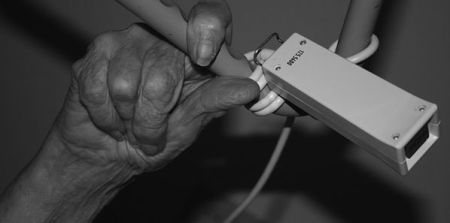Growing evidence shows that early mobilisation of patients in the intensive care unit (ICU) is a safe and cost-effective strategy to improve patient outcomes. Several studies indicate that providing early physical therapy interventions in the intensive care setting can decrease hospital and/or ICU length of stay (LOS). However, in ICUs where early mobilisation has not been practised, its adoption requires culture change by the multidisciplinary team, including physical therapists (PTs), nurses, respiratory therapists (RTs), and physicians.
This article describes a physical therapist-led programme to introduce such changes in a medical-surgical and a cardiovascular ICU. Interdisciplinary and multidisciplinary meetings and education sessions informed critical care team members about early mobilisation and encouraged knowledge sharing for safety and effectiveness. A lead physical therapist was appointed to advocate for early mobility and developed solutions to overcome the identified barriers. After the initiation of this programme, the number of ICU patients receiving physical therapy evaluations increased from 364 in 2011-2012 to 542 in 2012-2013. A physical therapist-led initiative can help establish an ICU culture that supports early mobilisation, but the change is slow and requires interdisciplinary collaboration to identify and overcome barriers.
Methods
Baylor All Saints Medical Center at Fort Worth (Texas) is a 525-bed acute care hospital providing a broad range of medical services. The facilities include a 16-bed medical-surgical ICU and a 15-bed cardiac ICU. The specialties include neurosurgery, cardiovascular surgery, head and neck reconstruction surgery, and liver and kidney transplantation. One internal medicine physician rounds on all reconstructive head and neck patients. The PTs and RTs are contractors, and the nurses are staff.
Prior to implementation of this programme, there was no protocol for ordering physical therapy for patients admitted to the ICUs. Rather, physical therapy orders were handled on an ad hoc basis. After receiving the orders, the PT performed chart reviews and contacted the nurses to determine if the patients were stable to participate in physical therapy services, using guidelines taken from a combination of nursing education courses the lead PT attended as well as literature and continuing education courses attended.
In May 2011, the physical therapy department initiated steps toward introducing early mobilisation as standard practice in Baylor All Saints ICUs after a PT began to notice discrepancies in evidence and what was being practised in the ICU. The PT found that it was acceptable to progressively mobilise patients who had undergone coronary artery bypass graft surgery but not other patients who seemed to meet criteria to participate in PT services.
Recognising the importance of interdisciplinary communication and collaboration for early mobilisation, shared meetings and education sessions were held to inform critical care team members about early mobilisation and encouraged knowledge sharing for safety and effectiveness. A lead physical therapist was appointed to advocate for early mobility and developed solutions to overcome the identified barriers.
During the middle of this process, the lead PT conducted an anonymous email survey of the critical care nursing and respiratory therapy staff to identify their concerns regarding any perceived barriers to early mobility in the ICU. The programme also included a review of a convenience sample of 21 charts for patients who had an ICU stay of 3 days or longer between May 2012 and May 2013 and who participated in physical therapy sessions in the ICU. The review aimed to gain a sense of the characteristics of the patients receiving physical therapy interventions in the wake of efforts to promote early mobilisation in the ICU. Also, the total number of physical therapy evaluations performed on ICU patients during the first (April 2011-April 2012) versus the second (May 2012-May 2013) years of intervention was analysed to determine if the number of PT orders had increased after some of the initiatives were implemented.
Results
Findings from the shared meetings showed that inviting members of the critical care team to share their knowledge with the physical therapy department opened the door to the interdisciplinary communication and collaboration needed to support early mobilisation in the ICU. The meetings also provided an important opportunity for members of the physical therapy department to raise any questions or concerns they had related to early mobilisation in the ICU with the experts best able to address them.
Survey results from 32 RTs and nurses uncovered some additional perceived barriers as well as some opportunities for improvement. All respondents agreed that all ICU patients should be evaluated by PT.
The review of the 21 patients who participated in physical therapy sessions in the ICU provides other physical therapy departments that want to implement an early mobility programme some idea of the kinds of patients and the type of session they can expect. Significant proportions of the participating patients were on ventilators or continuous dialysis, meaning that PTs need to plan for sessions that accommodate the restrictions these pieces of equipment impose.
References:
Harris Cl, Shahid S (2014) Physical therapy-driven quality improvement to promote early mobility in the intensive care unit. Proc (Bayl Univ Med Cent), 27(3): 203-7.
Latest Articles
ICU, physiotherapy
Growing evidence shows that early mobilisation of patients in the intensive care unit (ICU) is a safe and cost-effective strategy to improve patient outcom...



























